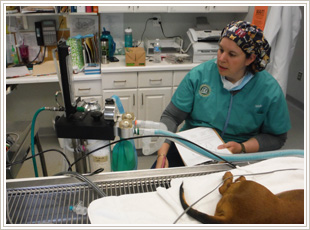Your Pet's Surgery

We understand that surgery is not an easy experience for you and your pet. At Community Animal Hospital we strive to ensure your pet’s surgical procedure is as comfortable and stress-free as possible. To that end, we also endeavor to provide our clients with a clear understanding of why a particular procedure is necessary, what the procedure entails, proper post-operative care, and convey any other information you may need to feel comfortable that you are making the right choice for your pet.
Staffed by a team of highly trained veterinarians and experienced veterinary assistants, we are proud of the quality of surgical care we provide and the wide range of surgical procedures we offer. Community Animal Hospital’s state-of-the-art surgical suite provides a safe and well-equipped site for a wide variety of soft tissue and orthopedic surgical procedures. These include spay and neuter procedures, mass removals, cranial cruciate ligament repair, fracture repair, medial patellar luxation surgery, and many other health sustaining and lifesaving surgical procedures.
 Pain Management
Pain Management
We believe that identifying and relieving pain is important to the recovery of your pet. Therefore, pain management is an important aspect of our intra- and post-surgical protocols. At discharge, we may also send additional pain management medication home with you and your pet after providing a thorough explanation of its proper use and dosage.
 Anesthesia and Monitoring
Anesthesia and Monitoring
Anesthesia and cardiovascular monitoring are important, integral aspects of every surgery we perform. For this reason, your pet has access to the best anesthetic administration and cardiovascular monitoring equipment and protocols that are available.
Anesthesia is individualized for your pet based on a number of factors. These include the type of procedure, his or her preexisting conditions, blood test values, age, breed, and prior anesthetic experience.
During anesthesia and surgery, your pet is constantly monitored by a trained veterinary assistant, using our advanced, non-invasive monitoring system. This system continuously monitors your pet's arterial oxygen level, blood pressure, heart rate, respiratory rate, and core body temperature.
On the day of your pet's surgery, you will be asked to arrive at the clinic in the early morning. Your pet will have a pre-anesthetic exam and presurgical diagnostics may be run to detect potential surgical risks. In most cases, a catheter is placed and IV fluids are run to support your pet through anesthesia. Once your pet's procedure has ended and your pet is awake, you will be called to discuss next steps or to set up a discharge time. When your pet is dicharged from the clinic, a staff member will go over home care instructions with you.




